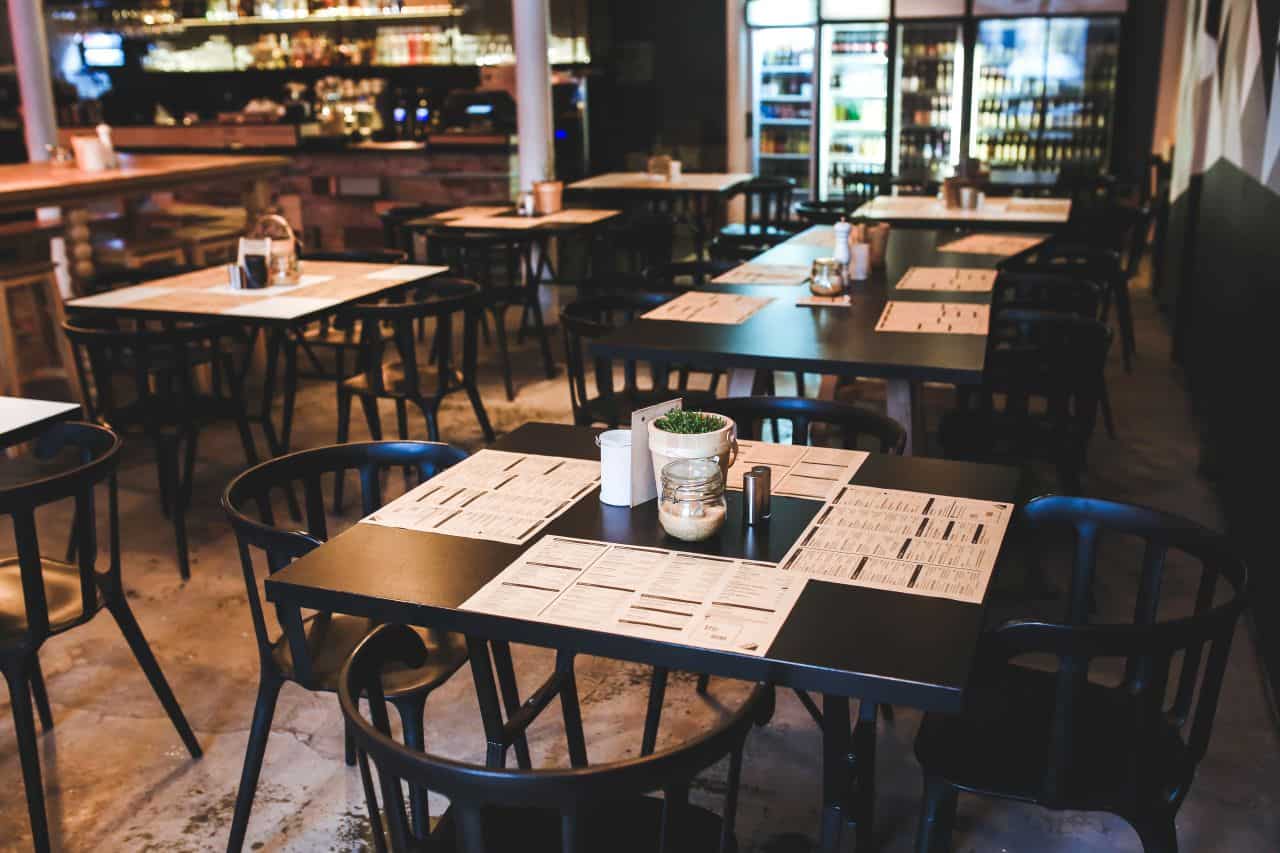First of all, let’s define “lamination.” It is a technique of manufacturing a material in multiple layers producing a composite material that is permanent and very strong. Lamination uses heat, pressure, welding, or adhesives to assemble multiple layers into a solid surface.
Years ago, laminated tables were considered inferior to natural materials. This was perhaps because the technique for making laminated tables was still in its infancy. The technique has been perfected, and past problems with laminated surfaces no longer exist. Today laminated surfaces have several advantages over their natural counterparts.
The Pros of Using Laminated Restaurant Table Tops
- Save Money – Laminated table tops are usually more economical than natural wood, yet they look alike.
- Customization – You can customize laminated tables to fit your desired size and shape.
- Optional Appearances – Laminate table tops can have the appearance of wood, marble, stone, printed images, a logo, or of a uniform color.
- Durable – Laminated surfaces will last longer than wood or metal and maintain their new look as they are scratch-resistant.
- Easy Maintenance – Laminate table tops can be easily cleaned and wiped down with a soapy cloth. Laminated surfaces are also more stain resistant than natural materials.
- Hygienic – These days, hygiene is even more important than before COVID, and laminated restaurant table tops can be disinfected easily, unlike natural wood, where germs can collect in the cracks and crevices.
- Less Absorbent – If your restaurant tables are outside, laminated table tops are the best choice as they are less absorbent than natural wood and won’t rust or tarnish like some metals.
- Heat Resistant – Laminated surfaces can be heat resistant up to 180°F. which is great if you will be putting hot dishes on tables and countertops.
How Does Lamination Work in Table Tops?
Laminated restaurant tables are usually made from wood (often chipboard, plywood, or MDF) covered with a layer of synthetic sheet material. The thin protective layer can be customized to look like different natural surfaces. Once laminated, the core material (wood) and the synthetic surface appear as one. Standard laminated table tops are one inch thick, although they can be thicker.
Wood-Look Laminate Table Tops
If you use laminate table tops that look like natural wood, you get the practical advantages of lamination with the appearance of natural timber. They will be cheaper than natural wood tables but are not likely to warp or split. Laminated faux-wood table tops are easier to clean than the real ones, as the surface is smooth and not textured.
Marble-Look Laminate Table Tops
Marble tables are heavy, expensive, and breakable. But you can get laminated table tops that resemble marble and avoid all the cons of natural marble. Marble-look laminate surfaces are often edged with a metal or faux-metal strip.
Edging on Laminate Restaurant Table Tops
The edges of a laminated table can be covered by an edge strip of the same material as the table surface or left bare, showing the core material beneath the laminated surface, or the edges can be covered with a strip of natural wood.
- Laminated Edges – The sides of the table can be covered with a thin strip (an edge strip) of the same laminated material as the tabletop. This gives the table a uniform appearance. Edge strips are not always available in all colors and finishes or in various widths.
- Edges Left Exposed – If the piece of core material (plywood or MDF) is laminated on the top surface but left bare on the edges, then the exposed wood needs to be varnished or covered in a suitable lacquer.
- Edges Covered with Natural Wood – It is possible to cover the edges of a laminated table with strips of natural wood. These can add a nice contrast to the tabletop. If you have a faux natural timber laminated tabletop and add a real timber strip along the edges, the table can appear to be made completely of natural wood.
- Aluminum Edging – Laminated tables can be finished with a strip of aluminum wrapped around the edges.
Types of Laminate Table Tops
Melamine Table Tops – A popular synthetic material used in restaurant table tops.
Resin Table Tops – High pressure is used to solidify and unite the layers of a resin surface.
Laminated Chipboard – Thermally fused horizontal grade laminate with chipboard.
Werzalit Table Tops – Made from a highly condensed core material that is UV resistant and waterproof.
Laminated Plywood Table Tops – Plywood is a popular core material and can be laminated with fiberglass or epoxy.
Reversible Table Top – A laminated table with lamination on both sides of the core material so you can flip it over when you feel like a change.

